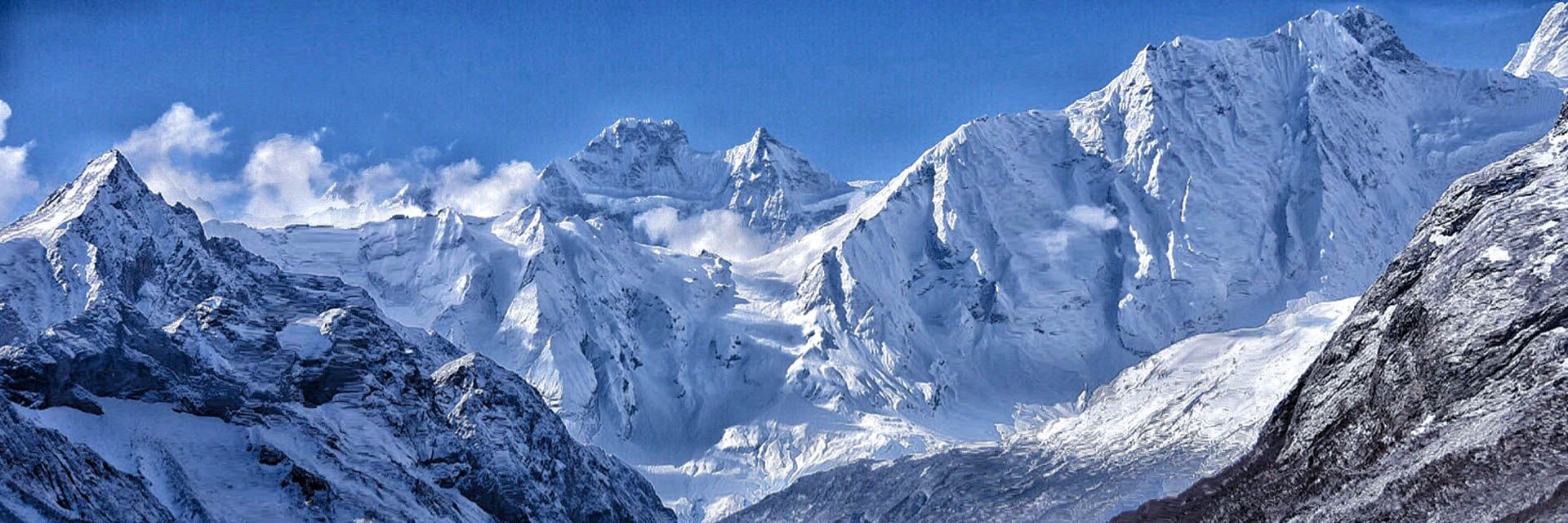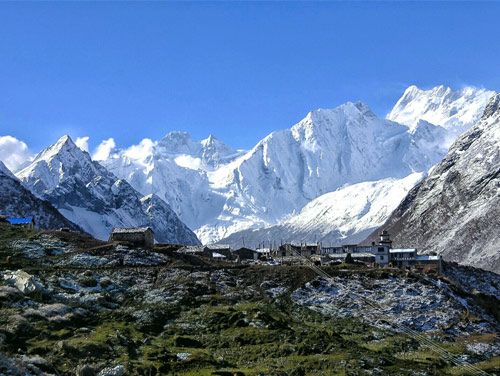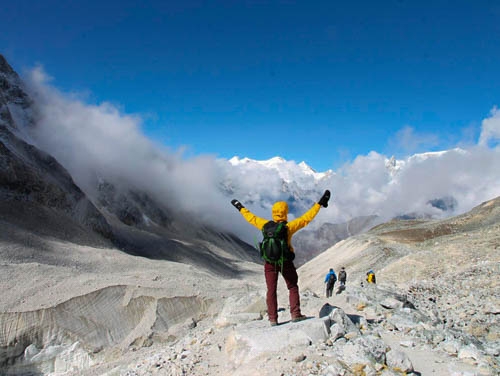Tsum Valley - homeland of Tsumba people
Tsum Valley is one of the most isolated gorges in Nepal. It was a restricted area until 2008; it is one of Nepal's least visited trekking destinations. The route to Tsum valley trekking takes you through the majestic surroundings of Ganesh Himal Ranges, Shringi Himal, and Boudha Himal. Upper Tsum Vally is the homeland of the Tsumba people and they practise Bon shamanism and Buddhism.
Why Tsum Valley Trek?
Tsum Valley is one of the most isolated gorges in Nepal. Tsum Valley Nepal Trekking is a sacred valley at northern Gorkha, near the Tibetan Border. This trail to Tsum valley ascends higher along the Budhi Gandaki River.
The local people are of Tibetan origin and speak their own dialect. Remote Himalayan valleys and untouched beauty make the trek much more pleasant. The valley furnishes us with a fantastic view of the landscapes and the mountains like Ganesh Himal (7,422 m/24,350 ft.), Shringi Himal (7,165 m/23,507 ft.), and Boudha Himal (6,672 m/21,890 ft.).
The trekking route gives glimpses of the diversity of flora & fauna during the trek. It has been declared a non-violent conservation area. Inside the valley, there is no permission to kill animals.
The trekking trail to Tsum Valley offers you a lush green forest of pine and rhododendron forest. On the way, you will encounter many waterfalls on both sides of the Budi Gandaki River. and hundreds of species of birds in the woods. Tsum Valley is also an excellent area to observe Himalayan Tahr and Blue Sheep.
Tsum valley remains untouched by the modern world in cultural and natural beauty. You will experience the unique flavour of civilization unharmed by the flame of modernization. The landscapes, Tibetan culture, and hospitality of local people make this trek unique.
The ancient Tum Valley is still visible today through its surrounding and old monasteries. People believe that Buddhist Siant Milarepa meditated in the caves of mountains. This valley far away from development activities for centuries. Trip to Tsum Valley dotted mani walls, chortens, and kaanis (gateway chortens) during a walk.
Usually, the use chorten is to ward off evil spirits from places that is been using as thresholds. Tsum Valley Trek in the Himalayas passes through many monasteries, including Rachen Gompa.
As a Tsum Valley Trek is a restricted area, so you need a least two people to the group. But as we are a local trekking agency, we can organize a group join permit and do your private trek. Come and join The Himalayan Odyssey for the excellent services in Tsum Valley.
Tsum Valley Trek in 2025 and 2026
Tsum Valley Trek 2025 gives you an experience of rural Nepal. Tsum Valley, away from the modern world in cultural and natural beauty make unforgettable memories for a lifetime. The best time to do Tsum Valley Trek for 10 days is spring ( March to May) and Autumn ( September to November).
We have departure dates to join this Tsum Valley trek in Spring and Autumn of 2025 and 2026. If you desire to have a personal trek and customize the Itinerary, we are flexible to customize it.
With our skilled and qualified team, we ensure you have a pleasing experience. Trekkers seeking more adventure and excellent views can combine Manaslu Tsum Valley Trek.
For those who have more time and want to explore more Manaslu Region. Our Tsum Valley with Manaslu Trek and Manaslu Circuit Trek may be best for you. So, sign up with The Himalayan Odyssey to make your trek free from irrelevant worries.
Tsum Valley 11 Days Short Itinerary
Our Short Tsum Valley 11 Days Trek starts as you leave Kathmandu. You will embark on a whole day's exciting road journey along the mighty Trishuli and Budi Gandaki Rivers. After 8-9 hours of the long scenic drive, you will reach Soti Khola.
The trial rises towards Machha Khola Valley of the Manaslu Region, where you witness beautiful blue rivers and thundering waterfalls during the trek. As we are along the trail, you will see the mix of green terrains and many traditional villages. As you walk further, you will witness beautiful lush forests with rhododendron blooming.
We are now heading towards Jagat and to Lokpa, where the trail leads us to Tsum Valley. The trekking route is decorated with fluttering prayer flags and mani walls which indicate the Buddhist culture. You will pass through beautiful glacial rivers, beautiful waterfalls, and the beauty of nature within the valley. On the way, we will be visiting Piren Phu cave, which is considered a sacred cave in the valley.
As we walk further, we will get to witness traditional Tibetan settlements. Continuing walking upstream along the Shiar River, you will arrive at Mu Gompa and Rachen Gompa. As we reach higher, we start to see rugged terrain and beautiful white peaks peeking at us. After crossing several suspension bridges, we will reach Gumba Lungdag.
Another day we will do a day hike to the Ganesh Himal Base Camp. After the rewarding trek to base camp, we will be back to Lokpa, Jagat, Dovan, and then Soti Khola. Your memorable trek concedes upon your return back from Soti Khola to Kathmandu by bus.
What will be the Trek Cost for Tsum Valley?
When you are thinking about exploring Tsum Valley, there will be many factors to consider. It includes like route, best time, how fit do we need to be? But one of the most important confusion will be, "How much does Tsum Valley Trek cost?".
Whether you are budget dependent or not, it is essential to consider how much you want to pay for the trip and what is the actual cost. The baseline cost of the Tsum Valley Trek will depend on the number of variables. Your cost will change based on how comprehensive you want your trip to be.
On average Tsum Valley, the trek will generally be 10-13 days, and the cost is generally somewhere between USD 705 to USD 1050. This price includes domestic flights, trekking permits, meals, professional trekking guides, porters, accommodation, entry fees, and others. You will get some discounts if you are in groups. The cost of Tsum Valley Trek highly depends upon travelling as private or in a group.
The permit cost for Tsum Valley Trek depends on the seasons and the number of days you will spend in this region. To trek to the Manaslu region, you will need 3 kinds of permits issued by the Government of Nepal.
Tsum Valley Trek Permit Cost
Tsum Valley Restricted Permit
- Tsum Valley trek permit costs USD 40.00 for the first 7 days and USD 7.00 each additional day from September to November.
- Tsum Valley trek permit costs USD 30.00 for the first 7 days and USD 7.00 each extra day from December to August.
Manaslu Conservation Area Permit (MCAP)
Per person, for SAARC USD.10 per person, and for other Nationals USD.30 per person.



